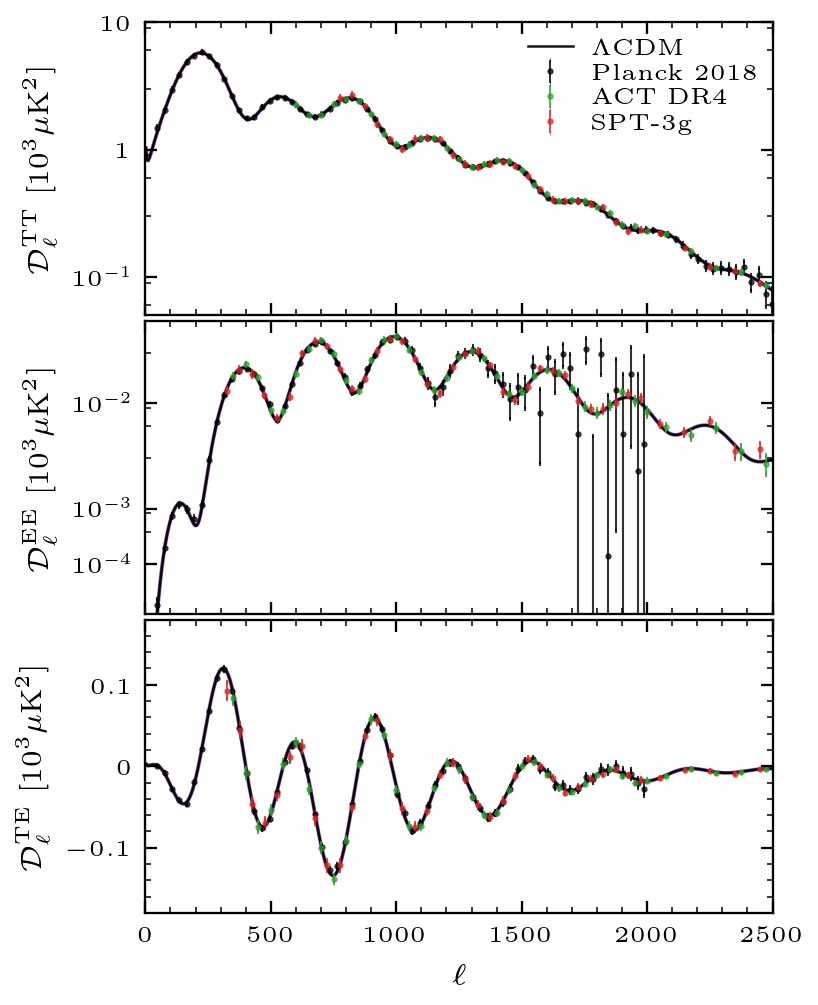Neutrinos and Helium Fraction
The effective number of relativistic (neutrino) species \(N_{\rm eff}\) and the Helium fraction \(Y_{p}\) exhibit a well-known degeneracy in their impact on the damping tail of the CMB power spectra. For a fixed angular size of the sound horizon, \(\theta_s\) - a quantity precisely measured from the position of the first temperature peak — increasing \(N_{\rm eff}\) leads to enhanced damping of the power spectra. This occurs because a higher \( N_{\rm eff}\) increases the radiation energy density and in turn the Hubble expansion rate \(H\). As a result, photons undergo more scattering, which amplifies the damping effect. Conversely, increasing the primordial helium fraction, \(Y_{p}\), reduces the number density of free electrons \(n_e\). Since helium recombines earlier than hydrogen, a higher helium fraction means fewer free electrons remain to scatter photons, resulting in less damping. Therefore, for fixed \(\theta_s\), \(N_{\rm eff}\) and \(Y_{p}\) are anti-correlated. This relationship can be expressed by the equation:
\[ \theta_d=(H/n_e)^{1/2}\theta_s \]Here, \(\theta_d\) represents the damping angular scale. For a fixed \(\theta_s\), it becomes clear how variations in \(N_{\rm eff}\) (through \(H\)) and \(Y_{p}\) (through \(n_e\)) influence \(\theta_d\) in opposite directions. We show this explictly in the panels below.
